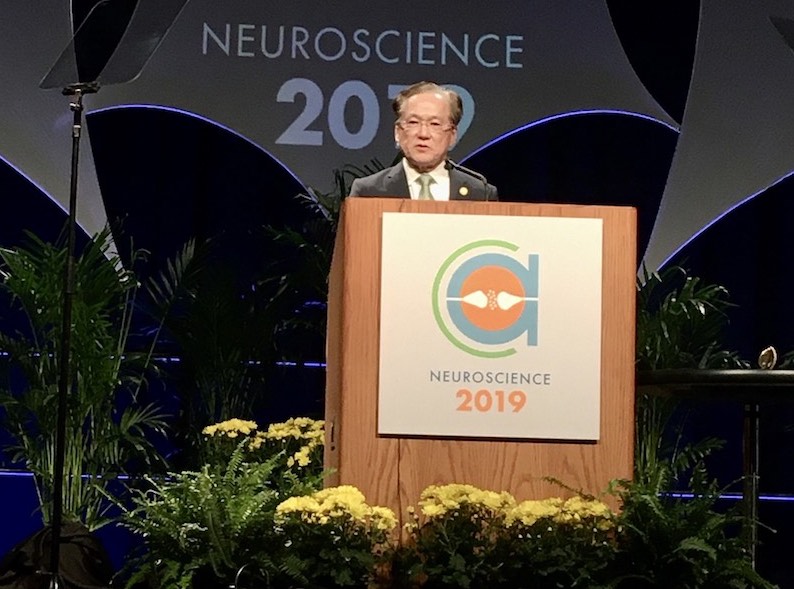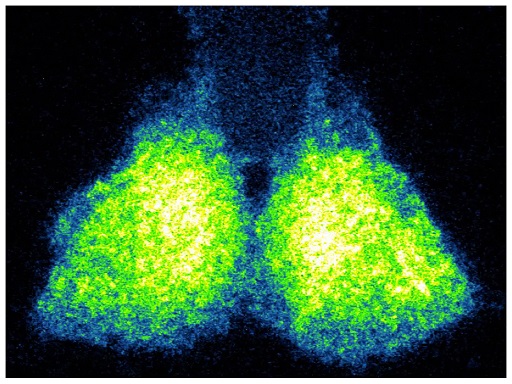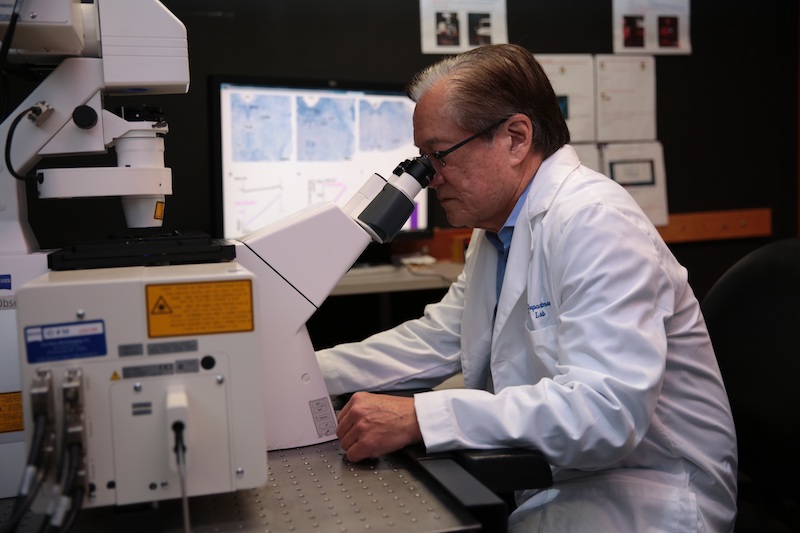Can timing of food affect lifespan?
Scientist who discovered circadian gene in mammals eyes next big find after receiving international prize
CHICAGO – Oct. 20, 2019 – Most of what we believe about eating and health stems from decades of research based on a simple premise: The amount of calories consumed affects one’s ability to maintain a healthy weight and live longer.

But relatively recent breakthroughs in understanding the genes that control our biological clocks have suggested a more complex formula. Turns out, when we eat may be nearly as important as how much we eat.
Dr. Joseph Takahashi, noted for discovering the first gene controlling biological clocks in mammals, addressed the topic at the Society for Neuroscience annual meeting where he was awarded the Gruber Neuroscience Prize for his pioneering work in circadian rhythms. The UT Southwestern scientist said his lab is using new techniques to research how the timing of calorie intake may impact lifespan, and he believes those studies may lead to the next big discovery in his field.
“Our early studies into the timing of calorie intake show we may be on the cusp of something huge,” Dr. Takahashi said. “If it’s not just calories that affect lifespan, if the timing of eating is a crucial factor, then that would be revolutionary. We would have to revise how we think about dietary restriction.”
Rebooting research

Dr. Takahashi explained that lifespan research has focused on calorie intake and hasn’t taken into account the timing of when food is eaten. In particular, mice studies that apply only daytime feeding – the wrong time for otherwise nocturnal mice – may be skewed by hidden factors such as lack of sleep and desynchronized circadian rhythms.
“These types of studies have been very difficult to conduct because they required manual feeding over many years,” Dr. Takahashi said. “Therefore, shortcuts, like daytime feeding, were taken to deal with practical matters such as the normal weekday work schedule.”
Dr. Takahashi is addressing the issue by reconfiguring research methods and embarking on years of new study – essentially starting from square one to verify and expand on what scientists believe about diet, health and lifespan.
His first study that used high-tech sensors and automated feeding equipment has already shown that the timing of eating can be a critical factor: Mice on a reduced calorie plan that ate only during their normal feeding/active cycle were the only ones among five groups to lose weight, despite consuming the same amount as another group fed during their rest time in daylight.
Dr. Takahashi’s lab is conducting further research to examine what impact these eating schedules have on the mice’s lifespans.
“Is it calorie reduction that improves our health and longevity, or the timing of our eating?” Dr. Takahashi said. “The answer may be a balance of both.”
‘Innovative approaches’
Dr. Takahashi’s latest endeavor follows multiple groundbreaking achievements by his laboratory, including the cloning of Clock, the first gene identified that controls circadian rhythms in mammals.
The discovery elevated research conducted elsewhere into the biological clocks of fruit flies – which won a Nobel Prize in 2017 – and positioned scientists to uncover the important role biological clocks play in the human body, from sleep and mental health to defending against deadly diseases such as cancer.
These contributions were recognized at the Society for Neuroscience meeting by the Gruber Foundation, which presented Dr. Takahashi with its 2019 Gruber Neuroscience Prize honoring scientists for major discoveries that advance the understanding of the nervous system.
The Foundation credited Dr. Takahashi’s “innovative approaches” that enabled the discovery of Clock in the 1990s. Subsequent research has established Clock as a prominent regulator of many genes, intertwined with an extensive list of biochemical pathways. It’s even involved in metabolism, as Dr. Takahashi’s group found while investigating why mice with Clock mutations become obese with age.
“It’s gratifying to have the field and our colleagues acknowledge the work that my laboratory has done,” Dr. Takahashi said. “And there’s still more our team will contribute to the understanding of circadian rhythms.”
Foundation for success

The Gruber recognition comes more than two decades after Science published Dr. Takahashi’s landmark study that led to the cloning of Clock. But he said the foundation for his scientific accomplishments was laid much earlier, in his early childhood in Myanmar and Pakistan during his father’s overseas job assignments as an economist.
There he developed a deep passion for science and discovery as he encountered exotic wildlife, both in his backyard where he often saw “millipedes the size of a cigar,” and on fishing trips where he saw unusual organisms such as snakehead fish.
Dr. Takahashi carried his fascination of biology into college, conducting his first circadian rhythms study on electric fish and eventually deciding on a career in research instead of medicine.
“My mother was disappointed I didn’t apply to medical school,” he said with a chuckle. “Every parent wants a doctor in the family.”
Notable discoveries

Dr. Takahashi spent the ensuing decades proving he made the right career choice. He has published an array of research that has broadened the understanding of biological clocks and how they affect everything from mammals to parasites.
Some of his lab’s findings have been rather unusual: For instance, a study in 2017 showed that late-night snacking may weaken the skin’s ability to protect against the sun’s UV rays. He has also published notable sleep discoveries, including identifying the first two core genes regulating the amount of deep sleep and dreaming in mice.
Dr. Takahashi is hopeful the continuing research into circadian rhythms may someday translate into medical breakthroughs. These innovations could come in the form of complex therapies for deadly diseases or perhaps a strategy as simple as knowing when to eat, not just how much.
“I’m extremely excited about the future of our research into calories and lifespan,” Dr. Takahashi said. “Every time we do an experiment, a new set of questions opens. It keeps unfolding. … One of the best things about being a scientist is that you keep finding new discoveries and new phenomena that you didn’t realize were there.”
Dr. Takahashi is Chairman of Neuroscience at UT Southwestern’s Peter O’Donnell Jr. Brain Institute. He holds the Loyd B. Sands Distinguished Chair in Neuroscience at UT Southwestern.
About UT Southwestern Medical Center
UT Southwestern, one of the premier academic medical centers in the nation, integrates pioneering biomedical research with exceptional clinical care and education. The institution’s faculty has received six Nobel Prizes, and includes 22 members of the National Academy of Sciences, 17 members of the National Academy of Medicine, and 15 Howard Hughes Medical Institute Investigators. The full-time faculty of more than 2,500 is responsible for groundbreaking medical advances and is committed to translating science-driven research quickly to new clinical treatments. UT Southwestern physicians provide care in about 80 specialties to more than 105,000 hospitalized patients, nearly 370,000 emergency room cases, and oversee approximately 3 million outpatient visits a year.
